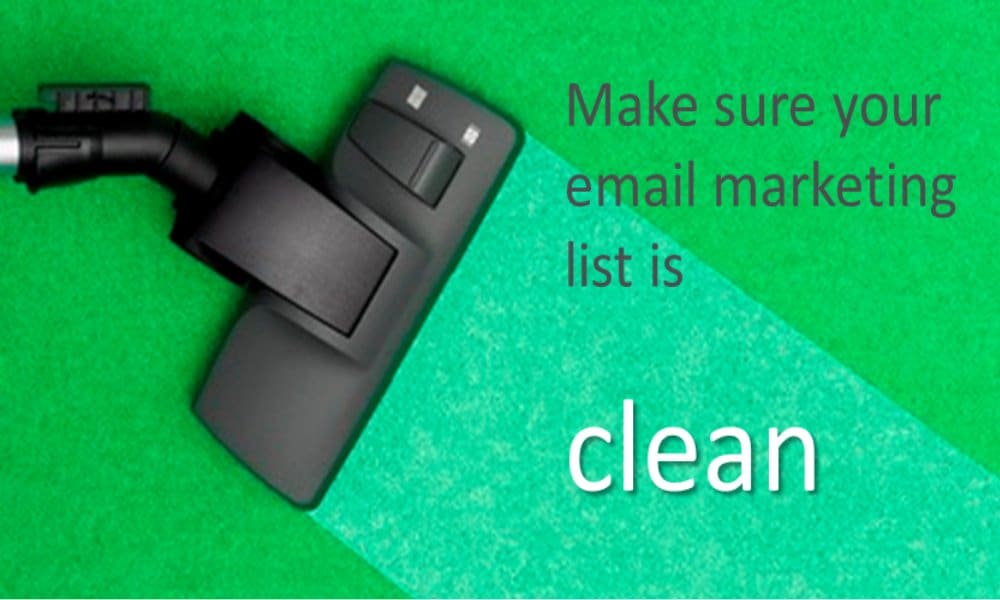The ROI from email marketing is spectacular, averaging $35 to $45 for every dollar spent. No wonder every company you connect with or buy from online wants to add you to an email list! But there’s more to it than simply hammering people’s inboxes. Let’s look at the four main elements of successful email marketing.
1. Your database
Your contact database is the first and most essential element for email marketing. It doesn’t matter how great your emails are if you have no-one to send them to. Or if you send them to people who aren’t prospects.
On the other hand, your database doesn’t have to be huge to deliver results. In fact, a smaller, more targeted list of contacts is often more effective.
Building your database
There are many ways to add contacts to your database:
- Start with customers and prospects. These contacts have expressed interest in your services, so you have implied consent to email them.
- Add a subscribe form on your website so that anyone interested can sign up easily. It’s good practice to tell them approximately how often they can expect to hear from you.
- Add a lead magnet to encourage people to subscribe.
- You may know businesses serving the same market who will agree to mail information about you to their database. In this case, it’s common to include a special offer or invitation.
- You can invest in paid third party email campaigns suited to your target market.
However you choose to build your list, remember that to comply with the Spam Act, you must have explicit or implied consent before you send any email.
Remember too that quality is just as important as quantity.
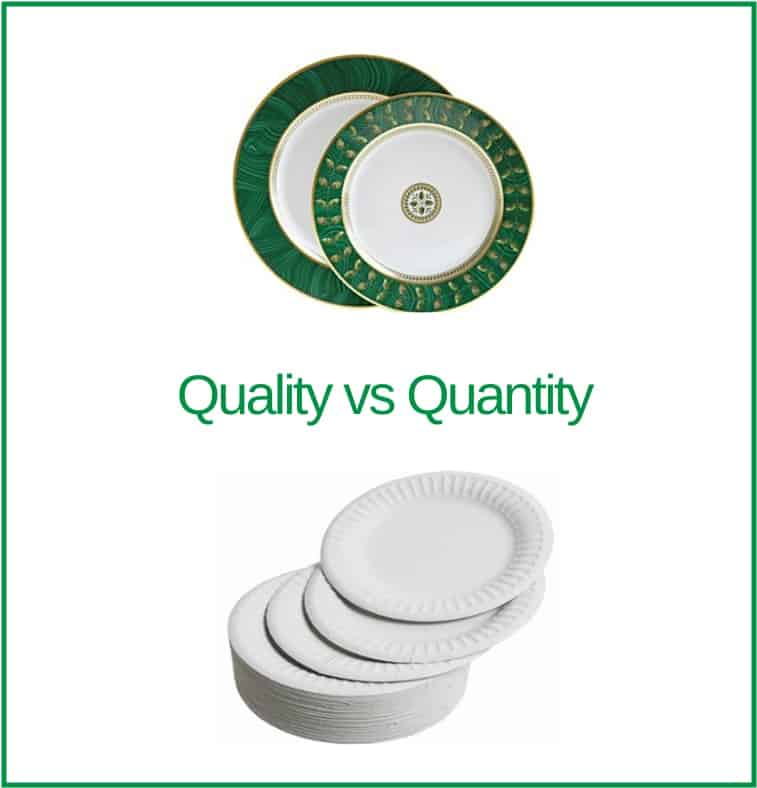
In a worst case scenario, people sign up with a gmail address and no other information. You have a contact, but only just. You don’t know anything about them. Ideally you’d like to collect more information, but there’s a trade-off here. The more details you ask for on a form, the fewer people will sign up. So focus on the most important information.
Names are important. They let you personalise content in the future.
Phone numbers are tricky. Many people don’t want to share them. It’s often better not to ask for phone numbers, or to make them optional.
Segmentation
What other information you want depends on your business. The aim is to segment your database so you can send only the most relevant information and messages to different contacts.
If you’re selling to businesses, you may want the company name, size, industry or location. You may want to know the role of the contact in the company.
For sales to consumers, it really depends what you’re selling. You may want to know about age, location, type of property they live in, financial status, whether they have children, whether they like animals, or so on.
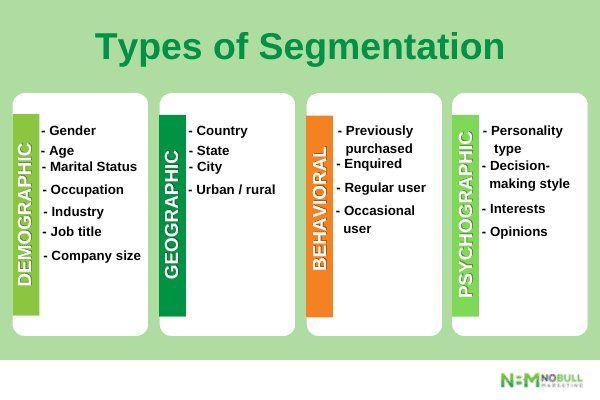
The golden rule is, the more information you ask for, the more value you need to give in return. If all someone’s going to get is your email newsletter, then you can’t ask for much beyond name and email. If you’re offering an e-book, templates, research results or something of value, you can ask for a little more. This is where lead magnets come into their own.
Some tech platforms also offer progressive profiling – so you don’t ask all these questions at once. Instead, every time someone interacts or downloads content, you ask for one more piece of information, so you build up a picture bit by bit.
Another element of successful email marketing segmentation is the contact’s relationship with your business. There are many cases where you may want to communicate with customers only. Or you may want to offer something to recent prospects, or ex-customers. It’s worth keeping this information up-to-date on your system.
Maintaining database quality
That last point leads us on to the question of database maintenance.
Whatever platform you use to send emails, it should have an automated unsubscribe process. This will remove any emails which ‘hard bounce’ – ie where the email address no longer exists. It will also allow people to unsubscribe when they’ve had enough of you.
However, lots of people stop reading your emails and never unsubscribe. Your emails go to their junk folder or their Gmail promo tab. They don’t even see them any more.
Not only is it pointless to keep these people on your list, it can actually hurt you. Your open rates go down. Major email providers like Gmail can identify that most of your emails are ignored. That makes them more likely to shift other subscribers to the promo tab. And if your email platform charges based on total subscribers, you could be wasting money.
Use the capability of your email platform to identify subscribers who aren’t opening or interacting. Re-engage them, or clean them off the list.
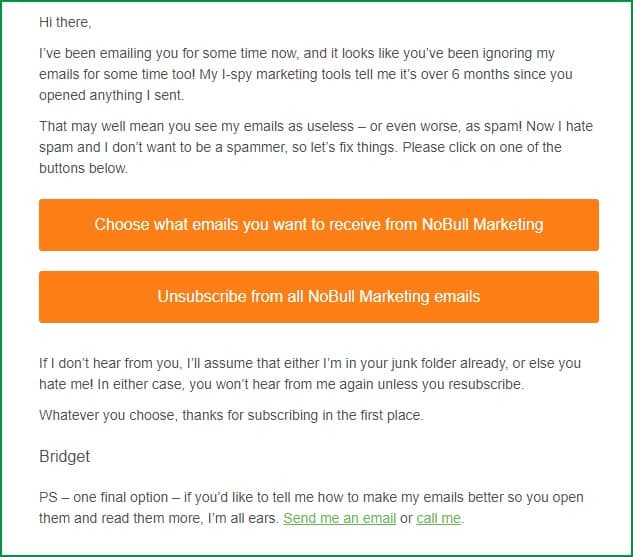
If you’re selling to businesses, auto-replies can also provide great information. For example, when a person leaves an organisation, you may find out where they’ve gone and who’s replaced them. (Just be aware that you don’t have permission to email these people. Pass the information to your sales team, or use a different channel to reach out.)
A last word about maintenance – databases get dirty in the same way houses do. This isn’t a one-off process. You need to do it regularly.
2. Types of email campaign
So, once you have a clean, quality database, what email are you going to send?
Newsletters and bulk campaigns
Most businesses start with some kind of email newsletter or update, sent to everyone on the database.
This enables you to
- Build a stronger relationship with existing customers and prospects
- Let people know about the full range of services you offer
- Introduce any new services
- Share success stories which make you stand out from the competition
- Give operational updates like Christmas hours or staff changes
- Promote special offers
Sending something regularly is ideal. You may also have occasional one-off emails for specific circumstances like holiday hours or an event you are hosting.
Once you’ve got this happening, you can also look at expanding the subscription options available.
Offering multiple subscription options
There are three main scenarios for multiple subscriptions:
- You may offer different content for different niches. For example a legal firm handles both personal and commercial matters, so they send information about estate planning or family law to individuals, while the business contacts are more interested in HR law or contract issues.
- You may have different options for the kind of content people want to receive. For example at NoBull Marketing we run a regular monthly newsletter, but we offer separate subscriptions for events and special offers.
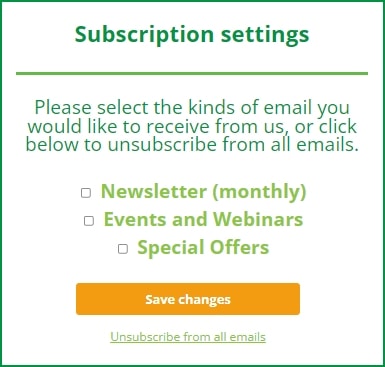
- If you’re the kind of business which emails every few days, you may find some people don’t want to hear from you that often. Offering them a weekly or monthly digest email instead may persuade them to stay on your list rather than unsubscribe.
Triggered emails and automations
These emails are not sent in bulk. Instead, they are sent to individuals when certain actions ‘trigger’ them.
One ‘triggered’ email which most businesses have (and most businesses don’t even think of) is the confirmation email which is sent when someone completes the contact form on the website. The only people who get this email are people who are reaching out to you already – it’s an opportunity to make a good impression which is often missed.
- Customise the words to your brand tone and style.
- Make it come from a specific person.
- Add links to relevant pages like case studies or information
These event-driven emails really come into their own, however, when you use more than one in an automated sequence. For example, if someone downloads a research report, the first email you send provides a link to the report, but you don’t have to stop there. You can also send further emails – about an issue identified in the report and how your services help address it; linking to a relevant case study; with an invitation to a demo and so on. You can even set up branching logic, so that people who show interest and click have a different experience from those who ignore everything.
Automations like this are extremely powerful in developing and maintaining interest. They take some time to set up, but work well to bring casual browsers further along the path to buying from you.
3. Email Marketing Content
Whether you’re looking at bulk emails or automations, quality, targeted email content is vital. How do you make email content stand out?
Subject lines matter
As David Ogilvy famously said, five times as many people read the headline as the body copy.
That’s especially true for email, which has to fight for attention in a crowded inbox.
How do you write better email subject lines?
- Try writing ten different subject lines for each email. This will push your creativity!
- Compare them. Read them aloud or use a headline analyser.
- Try personalisation, emojis or numbers to make your subject line stand out.
- Run an A/B test.
- Practise!
Personalisation
Personalisation is another great option – as long as you do it properly.
If you’re going to address people by name, make sure you have the given name and family name as separate fields. There’s nothing worse than an email which begins, ‘Hi Bridget Holland’ or the equivalent for you. It’s so clearly auto-generated.
It’s very likely that some of your contact records are missing information. Make sure you include a default value for any field you use. Try to make it as natural as possible. ‘Dear customer’ sounds a bit stiff. If it suits your brand, try switching to ‘Hi there’ instead.
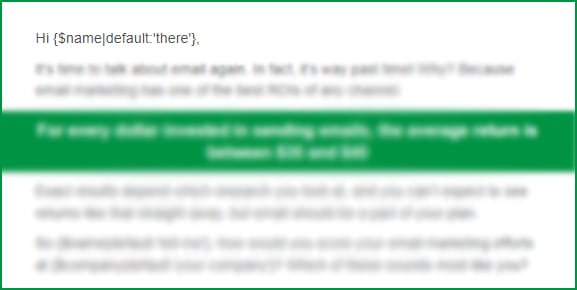
The name is far and away the most common personalisation, but using other fields can be really effective. For example,
- If you’re selling to businesses, sign off with ‘best wishes to you and everyone at <company name>’.
- For individuals, an automated Happy Birthday offer based on birthdays can be effective.
- For either, consider using location information. ‘Want the best-kept lawn / the most attractive signage in Epping?’
4. Tracking and Testing
Last but not least, let’s talk about tracking and testing. These elements of email marketing let you see how you’re doing and learn what works for your market, so that you can improve over time.
The standard measures for email marketing are the open rate and the click rate.
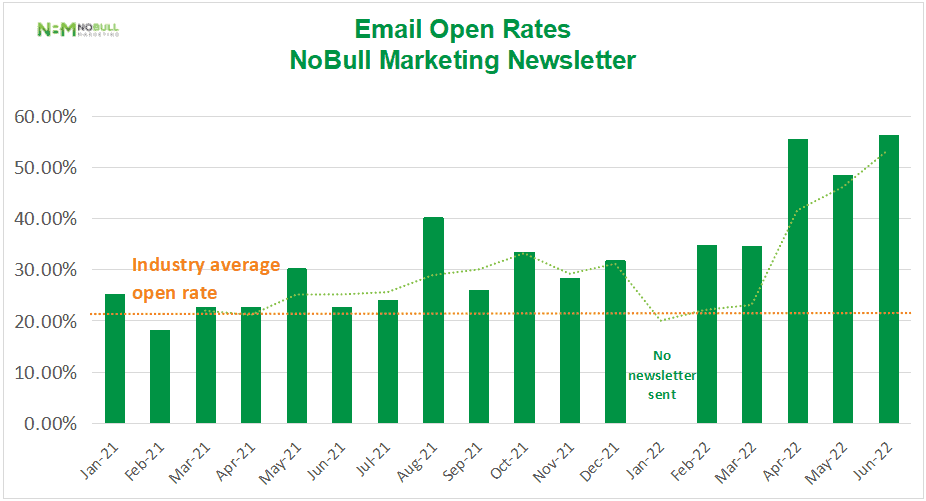
It’s also worth mentioning the unsubscribe rate. Keep an eye on this. A high unsubscribe rate means your emails are annoying recipients. They might be too frequent, or irrelevant, or too salesy.
Industry benchmarks are available from email platforms like Campaign Monitor and Mailchimp. While these can give you an idea how you’re performing, remember the benchmarks are based only on the provider’s clients. They may not tell the whole story. For example,
- Campaign Monitor has a click through rate for Education of 2.9% where Mailchimp has 4.4%
- Campaign Monitor has a click through rate for Publishing and Media of 4.62 % where Mailchimp has 2.9%
While it’s good to have an idea how the competition is doing, it’s more useful to track your own results over time and work to improve them. Which brings us on to the importance of testing.
Testing
The basic principle behind testing is simple. Compare how two options perform, then use the better one for future emails.
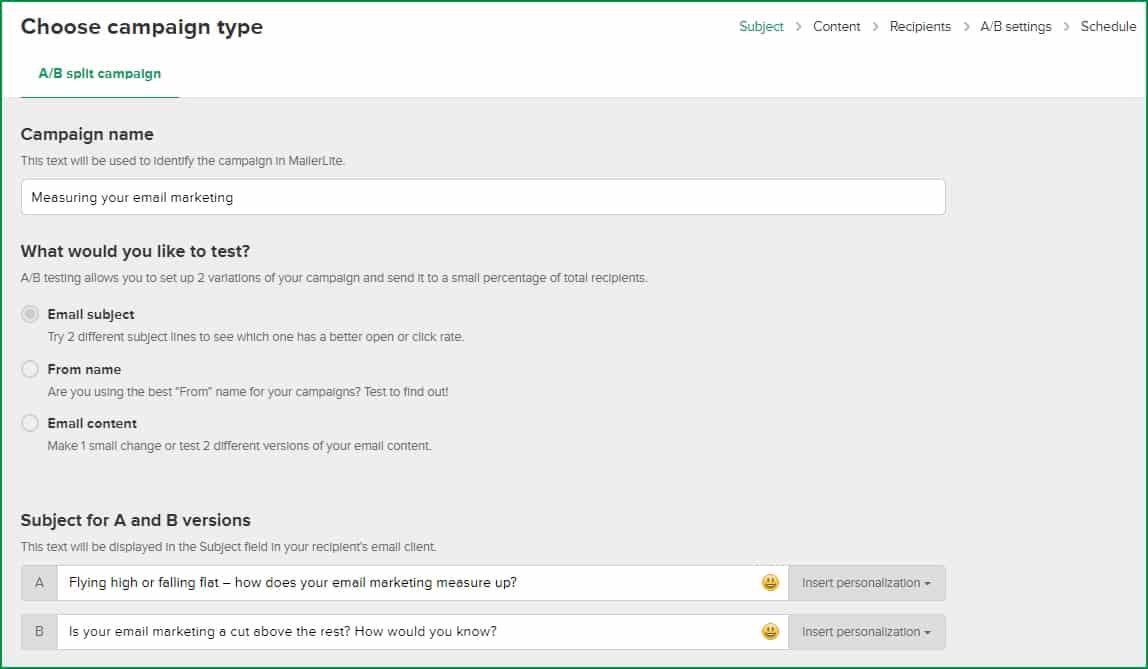
In real life, it’s not quite so simple.
- Every issue of your newsletter has different content. So if you send on Tuesday one week and Thursday another week, you can’t be sure the change in response is due to timing.
- If you have a small list, you face challenges with getting statistically significant results. I’ve written about this previously.
- Trying to compare versions of an automation sequence is even harder.
So should you give up on testing? No. You just have to do it smarter.
- Pick the tests which are likely to make the most difference to your business results, not the ones which are easy to set up on your email platform.
- Test one thing at a time. The more variables you have, the harder it is to know what drives any change in performance.
- Test over multiple sends – until you get a clear answer one way or the other, or until you decide the variable makes no difference. Sometimes, it doesn’t!
Some ideas for tests which might make a difference to your business:
- Does a single call-to-action per email get more clicks than multiple ones?
- What about long emails vs short ones?
- Do all those pictures and fancy formatting help?
- Does it matter whether I send from a person or a company name?
- Does including a PS with a link improve the click rate?
- What about the day of the week or time of day I send?
Remember, industry advice about what works ‘best’ is not necessarily best for your specific business. Use it as a starting point, but test as well!
Combining all the elements of successful email marketing
The most successful email marketing is built on four solid foundations:
- Build a quality database. Have permission. Get accurate data. Keep your data clean.
- Create quality content. Interesting, relevant subject lines and copy. Clear calls to action. Segmentation and personalisation to make each email more meaningful.
- Be consistent. Send newsletters regularly. Use the same style and tone across different emails.
- Track and test. Know what’s working and what isn’t. Build on the good and work on the not-so-good.
There is always room to improve something, somewhere. The challenge is to identify what will make the most difference fastest for your business. At the very least, I hope this post has given you some ideas to consider. And if you have questions about implementing tests or upgrading any elements of your email marketing, let’s talk through some options for you.



